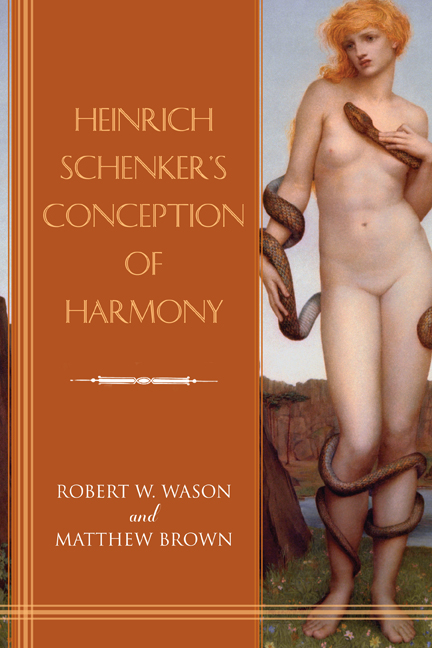4 - Sources of Schenker’s Intellectual Methodology in 1906: The Conflict between the Human and Natural Sciences in Schenker’s Education, Music Theory in the Later Nineteenth Century, and His Reaction to Both
Published online by Cambridge University Press: 14 October 2020
Summary
While the technical content of music theory in the nineteenth century may be seen in many respects as evolving fairly smoothly from earlier ideas, the intellectual methodology underlying it changed quite radically, as we have seen in the cases of Weber and Fetis. This was largely a consequence of educational reforms that occurred in the aftermath of the French Revolution, and continued into the next century. The founding of the new conservatories in the first half of the nineteenth century meant that music instruction was now available to a much larger public in urban centers, a public large enough that they had to be taught in classes. “Music theorists” suddenly had the possibility of becoming classroom teachers. Established in 1795, the Paris Conservatoire became a model for many others throughout Europe and beyond. Fetis, a Belgian, spent virtually his whole career in the conservatory environment, first in Paris, where he studied and taught from 1821 to 1833, and then in Brussels, where he became the first director of the Conservatoire royal de Bruxelles in 1832. While two other important theorists of the first half of the century, Simon Sechter (1788–1867) and Moritz Hauptmann (1792–1868), began their careers teaching privately in the eighteenth-century tradition, they were later appointed professors at the conservatories in Vienna (founded 1817) and Leipzig (founded 1843). We recall Sechter’s debt to eighteenth-century theory, made clearer now after the discussion of Rameau reception in chapter 3. We take up the work of Hauptmann a bit later in this chapter.
The new research-oriented universities, which were rapidly beginning to resemble their modern counterparts, also opened up to music theory. The most important figures in German-language music theory of the latter half of the nineteenth century, Hermann von Helmholtz (1821–94) and Arthur von Oettingen (1836–1920), were based in universities, as was, ultimately, Hugo Riemann (1849–1919), the towering figure at the turn of the twentieth century. As universities expanded and changed their missions, so music theory, always a hybrid discipline, began to borrow from intellectual sources previously unavailable. While Helmholtz and Oettingen began to focus on the theory rather than the practice of music, Riemann attempted to make their work—and that of Moritz Hauptmann—“practical.”
- Type
- Chapter
- Information
- Heinrich Schenker's Conception of Harmony , pp. 246 - 308Publisher: Boydell & BrewerPrint publication year: 2020



